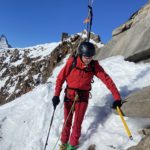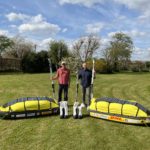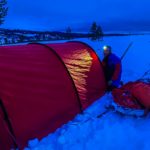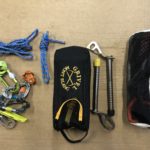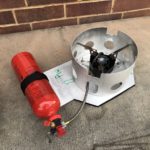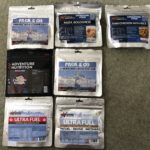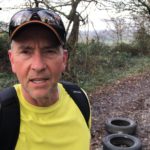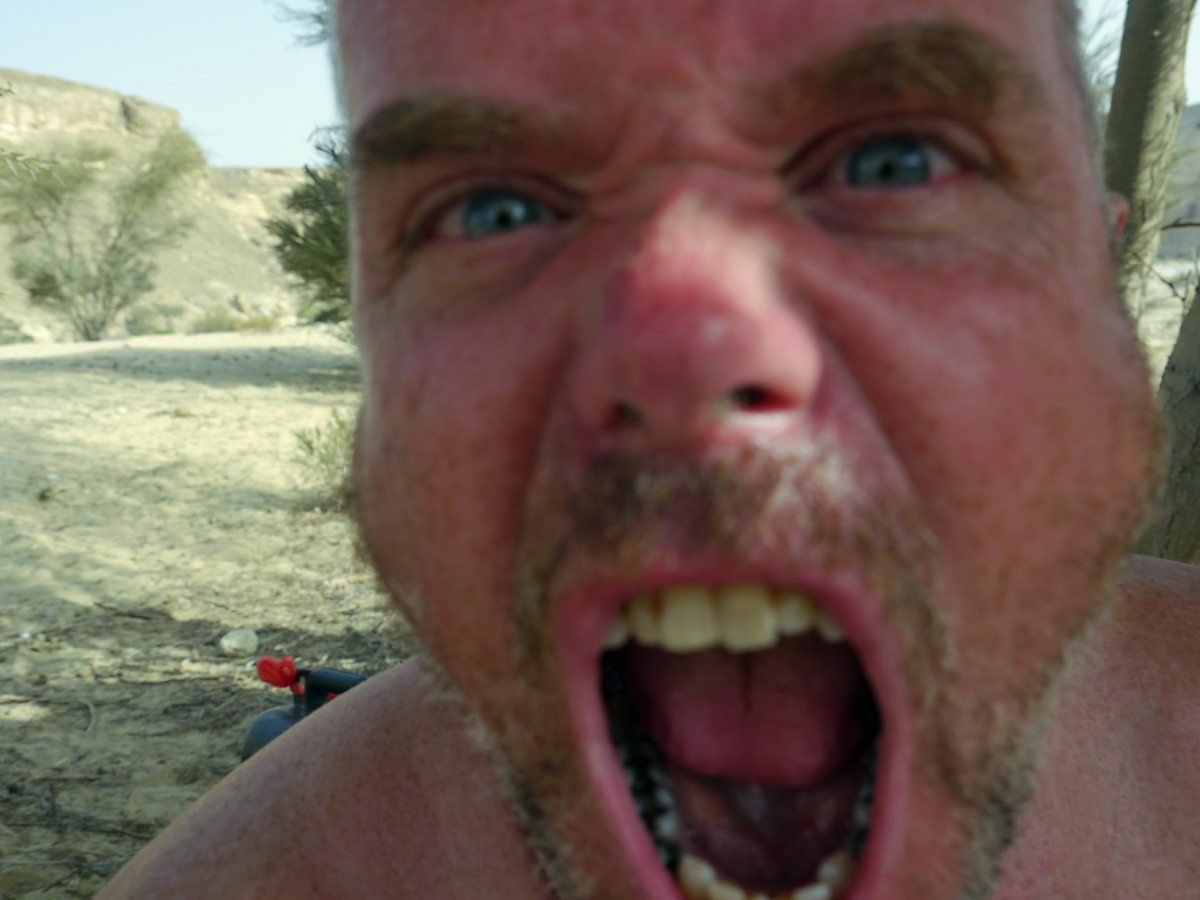Well, 2021 turned out to be the second year where the Covid-19 pandemic affected all our plans. Although frustrated, we were pragmatic and in early December 2020 accepted that our April/ May window for crossing the icecap would be postponed until 2022. Being positive this gave more time for Mikael Strandberg to engage participants and for James Ketchell and me to skill up, train and hopefully meet up in Sweden for some winter experiences with all our equipment.
As countries in Europe locked down against waves of first Delta and then the Omicron variant, they also rolled out vaccination programmes at different times. I had my first vaccine in March, second in June and then my third in November – we needed to have your wits about us to keep up with all the entry exit requirements for different countries.
By mid-February, my hernia operation was eight weeks old. I started walking and weightlifting at week four and cycling at week six. By week eight I had started my climb back to full fitness with weights, running, cycling, and tyre-pulling commencing in earnest. I had expected to be back to my original fitness level by week 13 (middle of March) but the waist harness for the tyre-pulling pushed in all the wrong places for my hernia and that aspect of my training made more gradual progress through 2021.
I completed my diet testing considering a Keto diet based on burning fat but opting for a more traditional protein, ‘good fat’ plus carbs-based diet getting most of the carbs from vegetables and fruits. Blood tests showed me, my doctor and dietitian that this was the best way forward for my body. To this I add a sports level multivitamin, omega 3, creatine and a hit of magnesium to supress cramps caused by repetitive exercise movements to which I know I am susceptible. I was pleased with the conclusions and remain so with the results. Then together with James and supported by Adventure Nutrition we agreed the essential elements of our food strategy based on their freeze-dried hydrated packs. To this we added high kcal/g snacks and supplements. From this we computed food orders, weights, and water requirements. All the while I continued to monitor my diet using the Cronometer app with my training partner, Siobhan (also a medical doctor).
We were all indebted to Pam Berg who lives in Greenland and is a Canadian-Greenlandic logistics expert for her work to prepare our expedition application. Together we develop our safety plan, participant descriptions and researched long and hard for the necessary insurance to cover search and rescue. We found Kalaallit Forsikring the only company able to provide the proper SAR insurance which also necessitated the setting up of a bank guarantee to cover the unlikely event that a participant would choose to ‘tap out’ of the expedition.
Meanwhile Mikael had finally assembled eight enthusiastic participants and we met on Zoom in June to build a virtual team and share experiences. Our expedition is in honour of the first Swedish Expedition to cross the icecap unsupported back in 1988 – the expedition was led by Mikael’s friend and mentor, Lars Wallgren. Lars did consider joining our trip, but it wasn’t to be. We still hoped for some training in Sweden subject to Covid travel restrictions. Now our route was west to east from Kangerlussuaq to Isortoq. We would then take a boat to Tasiilaq where we could ship our equipment home before traveling ourselves to Kulusuk for onward flights via Reykjavik, Iceland. Unfortunately, three participants had to withdraw for various reasons and a fifth was still awaiting his US Green Card to enable travel outside the US. Thus, by October we agreed to progress our application to the Greenland authorities as four and add the fifth participant if he was successful with his travel documents. So, Mikael, James and I welcomed Milka Raulin an extraordinary young Polish mountaineer to the expedition.
James and I ‘had all our equipment already’, or so we thought! Mikael was talking to Dixie Dansercoer and his book Polar Exploration became our bedtime reading. Although Dixie’s book isn’t aimed at crossing Greenland specifically it provided a veritable goldmine of detailed information and stimulated our investigations into a ‘stove tray’ design; fuel burn testing with our MSR XGK EX stoves for making water; water use and storage strategies; the lightest crevasse rescue equipment and procedures, and so on. There was much detailed research to do alongside our training.
The logistics of getting our food, equipment, and sleds from London to Kangerlussuaq proved challenging because passenger airlines considered our sleds to be oversize cargo which they wouldn’t carry while food must be ‘exported’ because it’s not returning. Only our personal equipment appeared to be carriable as excess baggage. Thus, when DHL agreed to sponsor James that solved a huge problem for us. They were able to handle getting our equipment and food to Greenland and our sleds to Copenhagen where we could load them on an Air Greenland flight as excess baggage. Other team members living in Sweden would be able to join the Air Greenland flight in Copenhagen directly.
At the Southampton Boat Show in September James and I met TotalCool. We were searching for the lightest solar panel and power bank combination that could produce enough power at 66 degrees north to charge our drone, cameras, and essential electronics for the filming we wanted to do while crossing. TotalCool were able to provide us with a 100-watt panel (3.1kg) and a 144 Wh (0.85kg) to meet our exacting requirements. Even on a sunny day our panel would only provide 40% of its potential capacity at this high latitude but we were pleased with this capability.
Iridium agreed to sponsor our communications providing sat phones and Sim cards for our use and kindly setting them up for tracking our progress across the ice cap. While we were also using Garmin InReach beacons blue-toothed to our phones for tracking and messaging the Iridium sat phones would provide the most effective means of communicating with sponsors. James was going to be taking schools on a virtual field trip.
Siobhan and I chose to go to the Alps from mid-December for three months to cross-country ski. My training became skinning, skiing, ski mountaineering and weightlifting. I was able to get practical crevasse rescue training and settle on the final equipment that James and I would carry. Pam continued to organise regular team Zoom meetings and in February our fifth participant, Mikael Mattsson had succeeded in getting his travel documents. Pam and I pushed the button on a team of five crossing the icecap and progressed the updates to the insurance documents and permit application. I also had time to thoroughly enjoy reading Endure by Alex Hutchinson – another recommendation of Mikael’s – which explores what makes a high performance athlete or adventurer. While I missed out, Milka and James travelled to join Mikael in the far north of Sweden with all their equipment for a three-day experience outdoors and came back with so many good ideas for us to assimilate.
Time was marching on, and I arrived back in the UK mid-March with six weeks to build up my tyre-pulling regime again, finalise the fuel burn testing, finalise our equipment and ship everything. Sharing between team members grew more specific and frantic as each of us readied for the expedition.
We conducted extensive testing of our MSR XGK EX stove using petrol and JET A which is available in Kangerlussuaq to see how much JET A fuel we would need to make 6L of water (from snow) per person per day in Greenland. We are planning to take 0.33L per person per day (30 days x 0.33 = 10L each). We learned that:
- Because JET A has 10% more energy than petrol, we get a good result (0.29L of fuel compared with 0.34L for 6L of water).
- Our water strategy (food – 2.2L, liquid – 800ml, hydration – 1.85L, pan priming – 400ml,) shows us needing 5.25L per person day giving a 12.5% margin compared with 6L.
- Using JET A1 means, it will take about 30 minutes to produce 2L, running the stove for about 150 mins (2h 30mins) per day to make 10.5L (5.25L per person).
- JET A is horrible to deal with so, we’re taking latex gloves to cover fuel handling and stove cleaning.
- JET A is a little harder to light than petrol because it is less flammable so, we are taking strong matches for the job.
- Somewhere between ¼ and ½ a turn on the fuel valve is good using the GK jet.
Finally, here we are with eight days to go: Five adventurers ready to ski across the Greenland icecap from Kangerlusuaq to Isortoq. I am tyre-pulling 16km per day. I am excited now. I hope the snow bridges at the start are strong enough to get us up on the ice cap without incident. I think the crossing will be fun, but I am apprehensive about the descent into Isortoq when the conditions might be a lot warmer and wetter than they are now.
You can follow our progress, but the next blog will be after our return when I can report on how well our preparations matched the real-world challenge!
Peter Wilson
Adventurer, Pilot, author
Three Journeys Round, Facebook
Two Rotors: One Planet, Earth and Low Level
Geographical Magazine’s review of Earth

